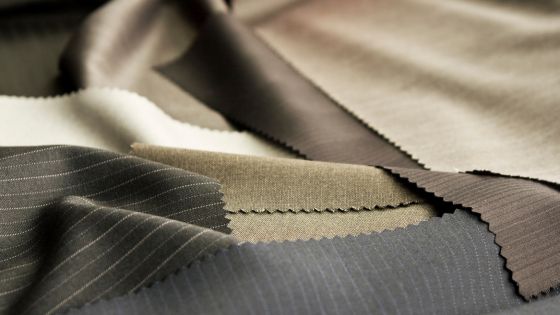Spandex, or elastane, is a synthetic fiber known for its exceptional elasticity. It is a polyether-polyurea copolymer that was invented in 1958. Spandex can be stretched up to five times its original length and then snap back to its original shape without losing its elasticity. This unique property makes it an essential ingredient in a wide variety of clothing items; Spandex is a synthetic fiber often used in apparel. It is known for its high elasticity and strength. It is also breathable and moisture-wicking.

Elasticity
What is spandex material? Spandex is a stretchable fabric in swimwear, running shorts and cycling outfits. It is also incorporated into other materials to provide them with added elasticity. It is also used in films for motion capture suits, which are used to create realistic 3D characters for movies. The elasticity of spandex comes from its chemical composition. The fibers comprise numerous polymer strands with soft, rubbery and rigid sections. The amorphous components intermingle and make the yarns soft, while the tough sections bond with each other and give them structure. When a force is applied, the fibers’ middle segments straighten out, and the amorphous components become longer, making the whole thread stretchable. When the elastic energy is removed, the unstructured details retract to their original length, and the fiber relaxes again. This ability to stretch repeatedly gives spandex its unique elasticity property, making it ideal for use in clothing. Spandex is an elastane fiber or polyether-polyurea copolymer. It is usually mixed with other non-elastic fibers, but it can also be used bare in woven fabric.
Stretchability
Spandex fabric is a highly versatile and comfortable material, ideal for creating form-fitting clothes and accessories. It is also highly durable and can withstand repeated stretching and re-forming. This stretchable material is used in fashionable garments, including tights, leggings, joggers, slim-fit denim jeans, undergarments, and socks. In addition, spandex is often used in athletic and exercise clothing and medical and compression garments. This remarkable stretchability is a result of the chemical composition of elastane fibers. The fibers contain soft and hard segments that intermingle with each other. The delicate components have a random molecular structure, while the rigid elements bond. When a force is applied to stretch the fiber, the hard segments break, and the soft components stretch out. The flexible, extended, delicate details re-cling to each other and then slip back into their original position when the force is removed. Unlike other synthetic materials, produced using raw materials derived from non-renewable resources, elastane is made from chemicals that can be synthesized in a lab setting. This makes it environmentally friendly and a good alternative to synthetic materials like nylon. It is also possible to blend this material with natural fibers, such as cotton, to produce comfortable and durable garments.
Durability
Spandex fibers can be stretched to up to 500% without breaking and will return close to their original length. They are also very lightweight and soft. They can be dyed easily and resist damage from body oils, sweat, lotions, detergents, and heat. Spandex is also resistant to abrasion and wrinkles. In addition to its stretchability, spandex has a high retractive ability and prevents fabric from bagging or sagging. During World War II, scientists began researching synthetic alternatives to rubber. Two primary motivating factors were the need to replace rubber for military equipment and the volatility of rubber prices. Research resulted in the development of polyurethane, the base material for spandex. Unlike rubber, which comes from oil, the prepolymers used to make spandex can be produced using renewable energy sources. To create a spandex fiber, one of two types of prepolymers must be reacted with di-isocyanate. The first is a flexible macro glycol, such as polyester, polycarbonate, or polycaprolactone. The second is a stiffer di-isocyanate molecule, such as isocyanate or methyl isocyanate. The long, flexible segments of the prepolymers allow the fibers to stretch, while the rigid components give the fabric strength. The fabric is covered with a layer of yarn, such as cotton or elastane. The finished product is a soft, form-fitting fabric that resists damage from sewing and substances such as lotions and detergents.
Lightweight
Spandex is a long-chain synthetic polyurethane, and many form-fitting consumer apparel manufacturers prize its elasticity. It can stretch to 5-8 times its normal size and is incredibly lightweight and soft. Its unique elasticity can be attributed to the combination of both soft rubbery segments of polyester or polyether polyols and hard urethanes or urethane-ureas. During World War II, chemical engineers started looking for synthetic replacements for rubber. This was largely due to two reasons: first, the war effort was sucking up all the available rubber, and second, the price of rubber was very unstable and fluctuated frequently. As the chemists began working on their synthetic substitute, they realized they needed to make the fibers as flexible as possible to fit comfortably over human skin. The engineers used polyurethane and later brought it to the United States when hundreds of top German scientists began new careers after the end of the war. The chemists added prepolymers, stabilizers, and colorants to the polyurethane to produce spandex fibers with a unique elastic property. These fibers are then twisted into solid strands and loaded onto a spool to be ready for weaving into fabric. The fibers are usually combined with other yarns in materials, and bare spandex fibers never appear in garments.
